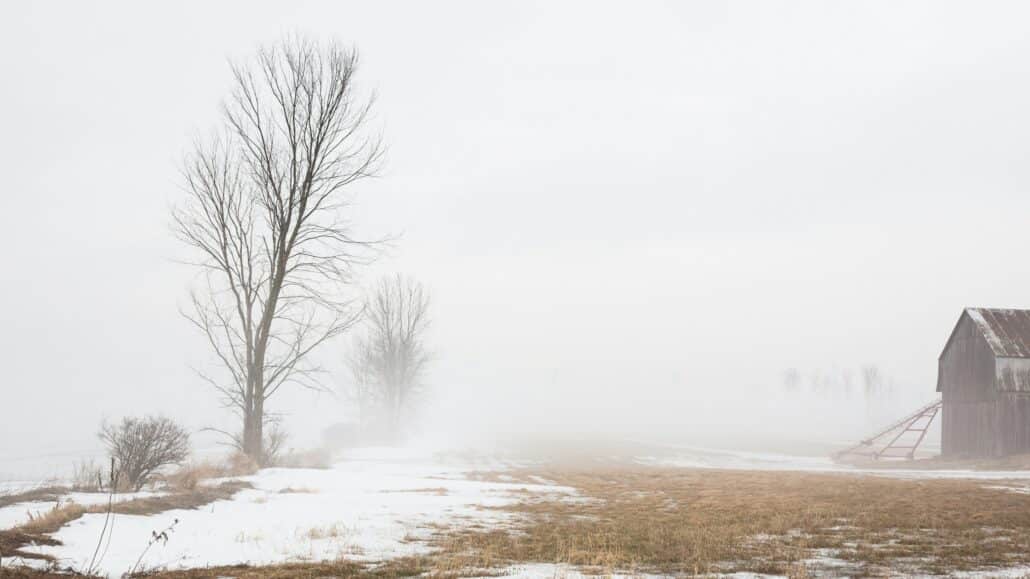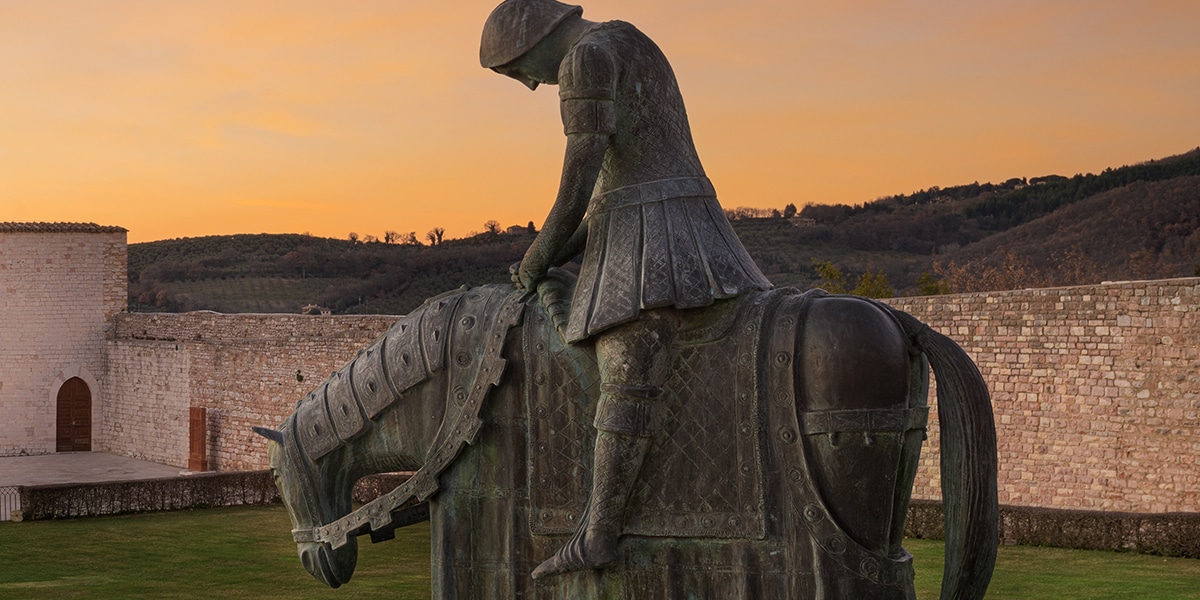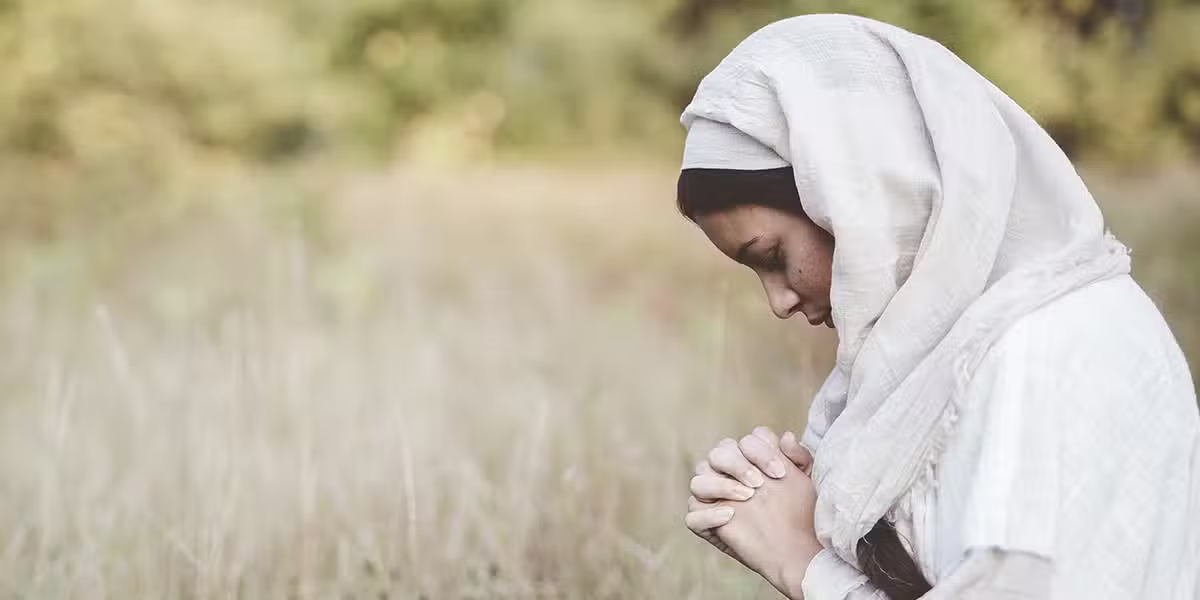This Advent, I am a grandmother for the first time. The Christmas story is at the very top of the list of things I look forward to sharing with my grandchildren, and I know just the props I will use to tell the tale. I will introduce my grandchildren to God with a 70-year-old, flimsy piece of cardboard and some salvaged lumber.
The cardboard, painted in pastoral splendor, is the backdrop of the Nativity set my parents bought at Woolworth’s for two dollars when they were married. The boards were rescued from the barn built by our ancestors on the Iowa family farm where I was raised. As Saint Francis instructs us, a barn is a fitting symbol for our earthly connection to the divine. I want my descendants to share the connection to God that can only be born in a barn.
I will tell my grandchildren about the rescued planks from our barn, where I helped my dad deliver a calf and watched my pony, Bucky, birth her gawky filly. In that barn, more than once I discovered a litter of brand-new kittens nestled in the straw, and watched piglets line up to nurse as their mother stretched heavily on the floor. A cozy barn in winter to house the birth of our savior? It made perfect sense to a girl growing up on a farm, where a barn was part maternity ward.
I will ask my grandchildren to help me unpack and display the Woolworth crèche. I hope they will enjoy playing with the figurines and admiring the backdrop as much as I once did. Everything I knew about life as a child was represented in the manger scene. In the barn, in the bleak of winter, the beasts we loved and who sustained us lay content alongside the tools of our labor. In the barn, we knew God’s presence, as accessible as the animals who selflessly provided our food and sustenance. Our livestock was our livelihood; our beasts of burden helped us shoulder the weight of the world. Of course the baby Jesus was welcomed to life by the animals! They shared their home with Jesus and warmed him with their breath. It was a form of hospitality I recognized.
In gratitude to the animals for their warm welcome of the Christ Child, my family honored them on Christmas Eve. My dad and brother gifted our cattle with an extra load of hay, while Mom and I fed our chickens and geese a double portion of mash. Mom’s beloved dog enjoyed the meat locker’s finest bones. Even the barn cats got extra milk and dinner-table scraps.
When I was quite young, this yuletide tradition of kindness to the animals garnered me a little bit of fame. When our local radio station held a “Best-Letter-to-Santa” contest, I listed my heart’s desires and promised to leave some grain for Santa’s reindeer. My consideration for the creatures clinched my prize. Every child leaves a treat for Santa, but my reindeer snacks landed me a set of toy dishes and the thrill of hearing my name on the airwaves. The experience of Christmas alive in our barn served me well in many ways!
Worn Out with Love
As befits my family’s understanding of the divine, the grandest feature of our crèche was the barn in the background. The thin cardboard scrim is printed with golden piles of hay and compassionate cow-eyes gazing at the holy scene. I suppose I knew the artwork was only a mass-produced copy, but I stared into it hour after hour, enchanted by its lyrical beauty. The effect was enhanced by a star cut out at the peak, through which a small electric bulb illuminated the manger.
The figurines in our crèche (hand-painted in Italy, proclaims the bottom of each form!) generally follow the natural laws of size and perspective, with one notable exception. At some point, my mother plopped a too-large porcelain collie dog right alongside the sheep and ass, in accordance with her own personal theology. She understood the goal is to make heaven on Earth, and Bethlehem gives us a glimpse of that possibility.
My mother could not fathom a vision of eternal paradise that didn’t include her faithful canine companion. Our Magi sported pointy beards, bright tunics, and fantastic turbans. Their faces were painted various shades of brown, indicating a racial diversity that was most exotic in the 1960s Midwest. The Blessed Mother, of course, is forever resplendent in robes of blue. (My mother considered images of Our Lady in anything other than blue purely heretical.)
The figures have been admired, touched, wrapped in newspaper, and unpacked for decades. The cow is missing a horn; the donkey has a chipped ear; Joseph’s hand forever grips a missing staff; the adorably ragged shepherds are even more tattered than when they began their watch; even the infant Jesus is shiny in spots, polished by generations of children acting out the familiar rustic story.
Like every family—like the human family—all of them are a little wounded. We are a little chipped or cracked, held together and shored up by those who care for us, but we all journey to Bethlehem hoping for healing.
The Tradition Continues
As we assemble the ancient crèche each year, I will tell my grandchildren the story of the first altar: a bed of straw. Straw is the leftover stalks of cultivated grasses, stripped of the grain that feeds animals and people alike. This humble stubble serves to the last (not unlike the Prince of Peace), taking its final form as a source of comfort and nourishment. Baby Jesus was warmed in the straw by the breath and bodies of animals, who give their bodies in service to us. Yes, the mysteries of our faith—our most human relationship with our God—are visible in stunning focus there at the manger.
Our old barn no longer serves as a shelter for the animals. Time and weather have taken their toll on its stability; it stands like a proud but aging sentry on our land. The few decrepit boards and door I have rescued now grace our urban home with a reminder of our past, our roots, and the singular miracle at Bethlehem. In this age when up-cycling is fashionable and repurposing is hip, my husband and I are staying on trend and using the panels to build small pieces of furniture. A bookcase, a chest, and a couple of tables—one for each of our children—just the right size to display a crèche at Advent.
In this busy season so crowded with commercialism, I hope all grandparents will find ways to bring the manger scene to life. Even if we cannot spend time among actual livestock, we can experience the sounds and smells of Bethlehem. Pull up some barnyard videos on the Internet and listen to the cacophony—the bleating and bellowing of the Christ Child’s first lullabies. Books about animals, hikes in the woods, planting an amaryllis bulb indoors—even simple connections with the natural world help us contemplate the astonishing idea that God was born to us one night among the lowly livestock. A thrill of hope in the weary winter of the world. When our grandchildren make this earthly connection to the divine, the gifts of Christmas can sustain them for a lifetime.








